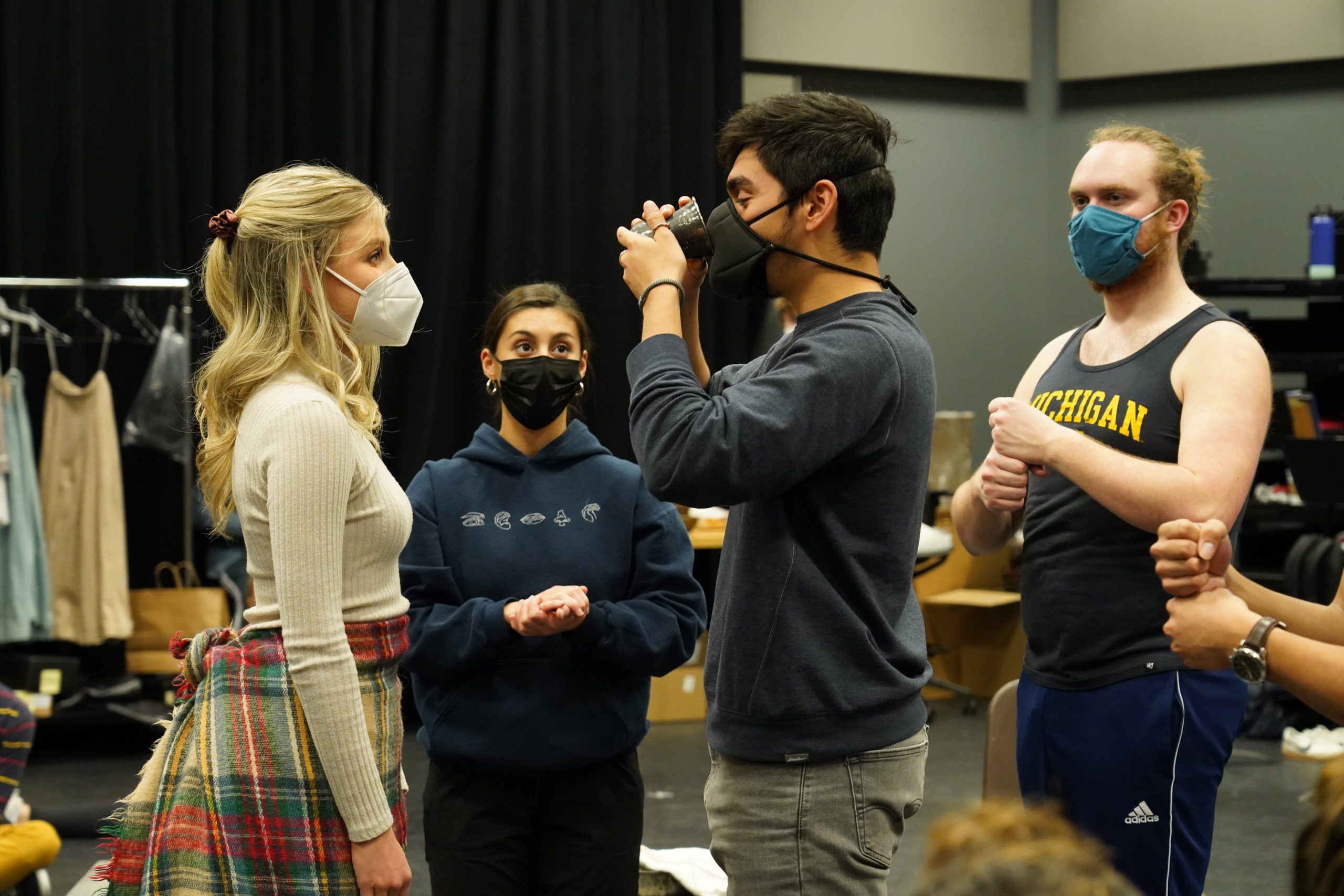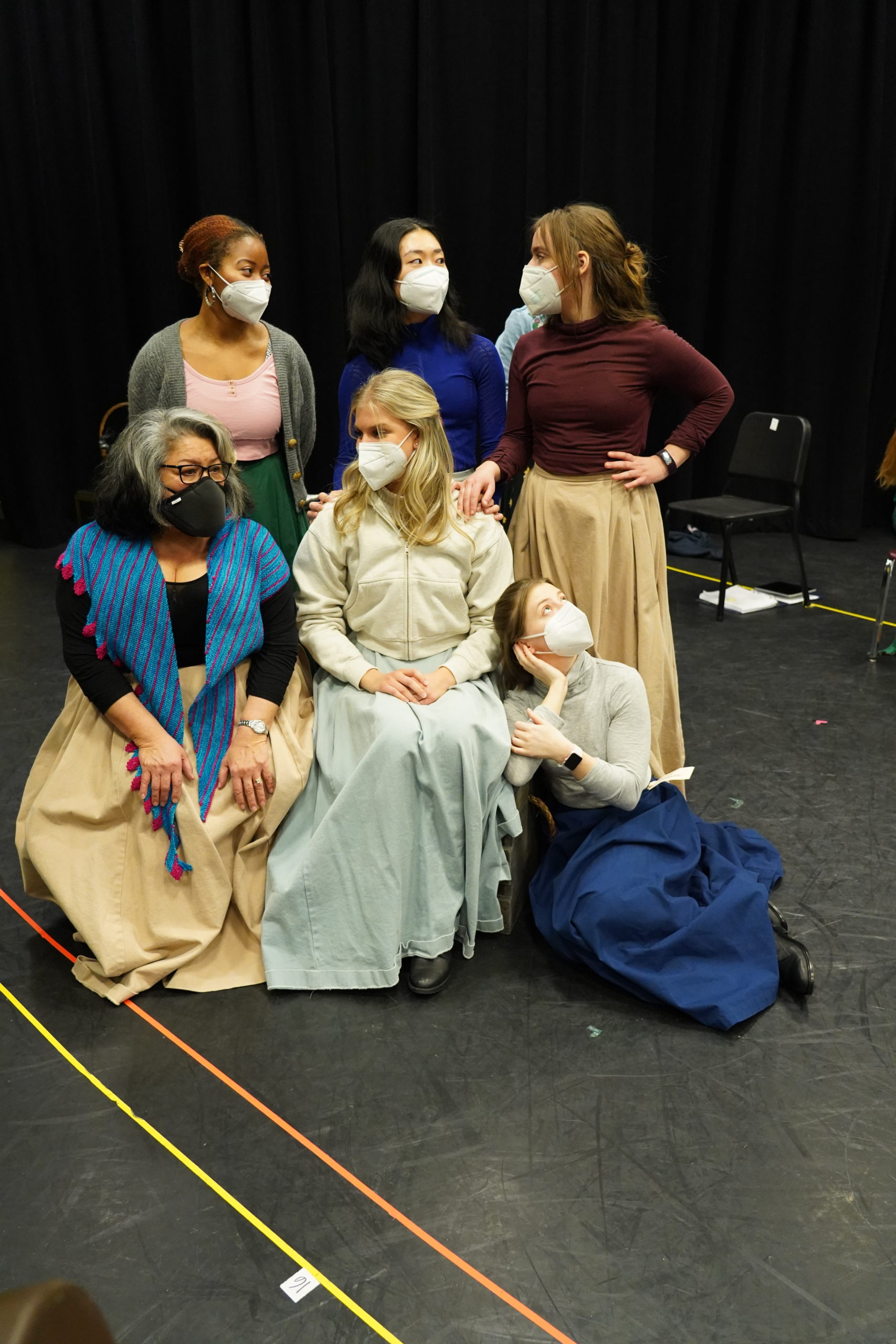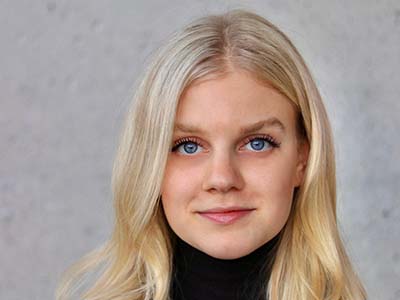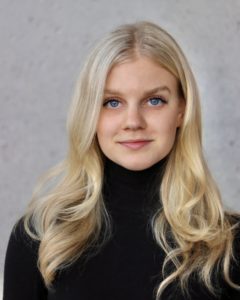A select group of musical theatre students have the opportunity to work with a professional creative team and Broadway performers in the UMS concert production of Fiddler on the Roof. In addition to countless hours spent in rehearsals, these students learned about Fiddler’s cultural and historical context with the help of several guests – U-M professors, rabbis, and other educators – brought in by Michael McElroy, chair of the Department of Musical Theatre and Arthur E. and Martha S. Hearron Endowed Professor of Musical Theatre. Musical theatre senior Ella Olesen offers her perspective on the experience and what it contributed to her performance.
The first guests Michael brought in were Rav Lisa Stella, Rabbi Josh Whinston, and SMTD DEI Interim Director Christi-Anne Castro, before auditions for Fiddler on the Roof even took place. The entire musical theatre department attended this conversation. There had been concern amongst the students, many of whom are not Jewish, about playing Jewish characters. Many were uncomfortable with the idea of being cast in Fiddler because they feared offending a potential Jewish audience member. The guests were surprised by the students’ discomfort, and I think Rabbi Whinston said he’d be more offended if the production didn’t happen because of students not wanting to participate.
I think one of the big takeaways from this conversation, for all of us, was that Judaism is not always a visible identity. Judaism can be an ethnic identity, a cultural identity, or a religious identity. Anyone could be Jewish without you knowing so. We talked about the good that could come from putting on a production of Fiddler with a multi-ethnic cast. We learned that there have always been non-white Jews in America, so our cast could open others’ eyes to this. Also, having a multi-ethnic cast would be a sign that America is becoming more equitable, specifically within the U-M musical theatre department. The guests also talked about how important doing research on Fiddler would be for those participating in the show. Research is important for any production, but perhaps it is more so for Fiddler, especially for non-Jewish cast members. The guests encouraged those cast to assume nothing and research everything. Fiddler is incredibly specific, and I think this is why so many different cultures around the world relate to it: there is universality in specifics. We live specifically, so the more specific the story, the more parallels the audience might find. The actors must know exactly what they are speaking about or dealing with on stage at every given moment in order to provide the audience with a potentially meaningful experience.
Then auditions happened. I was fortunate enough to be cast as Tzeitel, Tevye’s oldest daughter.

(l to r) Olesen (’22) with Logan Saad (’24), Diego Rodriguez (’24), and Zac Mitchell (’23) in a Fiddler rehearsal.
The Fiddler student cast gathered in December with educator Mira Sussman to learn about Jewish culture through dance. This was the first time our cast came together. It’s always exciting at the beginning of a new show process to look around and realize that those around me will come to feel like family over the next few months, since we’ll be spending so much time together in rehearsals. We started by sitting together in a circle in the middle of the rehearsal room. We gave our full attention to Sussman. No one took notes – we were all ears instead. She was really generous with her knowledge and created an environment where any and all questions were welcomed and addressed with care and good humor. She emphasized that it would be impossible to know everything about Judaism, which was relieving to hear, although I still wanted to soak up as much as I possibly could between now and our closing performance in March 2022. One of my favorite things discussed was Jewish humor. The culture is full of jokes and joy. Sussman encouraged us to check out The Big Book of Jewish Humor. After the session, I perused the book, laughed a lot, and gained a more nuanced understanding of the humor used in Fiddler on the Roof. She also got us on our feet and taught us about some Jewish wedding traditions, including heckling of the groom, lifting the couple on chairs, and the hora. She showed us pictures from her own wedding. We danced and sang and laughed and bonded, all while learning about and respecting this beautiful culture. We all went home in good spirits that night.
Over Christmas break, I did a lot of research by myself. I purchased and read a tattered copy of Life is with People, which I heard was a resource for the 2009 Fiddler tour. This book describes shtetl life. Reading it completely changed the way I read the Fiddler libretto. The student cast also met with the creative team over the break (on Zoom). Sarna Lapine, our director, gave us a list of more resources we could explore, which included both books and TV shows. I watched Netflix’s Shtisel, based on her recommendation. When I returned to campus in January, I was only more curious and interested in Jewish culture, and was excited for the upcoming sessions Michael had organized with more experts.
Professor Julian Levinson told us the path the Sholem Aleichem stories took before becoming the show we are working on today. After being published (in Yiddish), his stories were adapted into a film in the 1930s, then the musical, then the movie by the same name. So, the stories were passed through many hands before becoming the piece we are presenting. Professor Levinson discussed the context in which the musical was written, pointing out that Fiddler came 19 years after the Holocaust. Obviously, the Holocaust isn’t mentioned in the musical, since the show is set in 1905, but the pogroms could represent that violence, in a screened kind of way. Professor Levinson also talked about the meaning of the fiddler in the show. This character represents the spark/magic of the old world that is portable (the fiddler travels with the Jewish emigrants at the end). We talked about the origins of klezmer music (YouTube is full of incredible performances of this genre! I can’t help but smile and think of Fiddler listening to it). Jerry Bock’s music in the musical is an American version of those melodies. Levinson told us there is tons of superstition in the world of the show, which explains why Tevye’s dream is successful in convincing Golde to allow Tzeitel and Motel to marry. He also told us about a documentary, Image Before My Eyes, about Jewish life in Poland between the two world wars. I watched it and was blown away by the shtetl footage.
Next, we met with Rav Stella again, on a Friday evening, just after sundown, to experience Shabbat rituals. The original plan was to actually have a Shabbat dinner, but COVID restrictions prevented this from happening. So, instead, Rav Stella performed and explained the way she does Shabbat while we sat distanced from her and her Shabbat table setup, eagerly absorbing her words and actions. We read and discussed Shabbat-related verses from the Torah too. Though we sat distanced, the evening was warm and intimate, and I left feeling closer to my castmates, Rav Stella, and Jewish culture itself.

Broadway performer Loretta Ables Sayre (bottom left) with Olesen, Kelly Lomonte (’23) and (standing, l to r) Kate Louissant (’24), Alyssa Sunew (’25), and Kate Cummings (MT24).
Our final educational meeting was with Professor Mikhail Krutikov. We met on Zoom, each plugged into our computers while scattered around the rehearsal room (we had a music rehearsal immediately afterwards, so we needed to be in the same space). Professor Krutikov talked about the Sholem Aleichem stories (Fiddler’s source material), showed us images from Eastern Europe at the turn of the 20th century, and led us to more resources, such as the 1937 movie The Dybbuk, which features a wedding scene (I had asked him about Jewish wedding traditions in the meeting). He provided remarkable sensory detail, such as the fact that the shtetl smelled terrible—horse poo was everywhere, and diseases like cholera were rampant. Also, the window frames on Jewish houses were painted brown, while those of Christian peasant houses in the same villages were sky blue. Details like these are always welcomed by any actor, but I believe that having a vivid picture of where each scene in the show takes place is especially crucial to our production, since we have no set – we are performing in concert with an orchestra, celebrating John Williams’s brilliant film orchestrations. We must rely on our research and imaginations to create the world we are inhabiting. We must visualize our world in order for the audience to see it too.
My overall takeaway from all of these wonderful learning sessions combined is a much more nuanced understanding of Jewish culture and how it operates within Fiddler on the Roof. I understand Tzeitel’s motivations at a core level now, as well as the extreme risk she and her sisters take by breaking the tradition of matchmaking. I care about her deeply and am honored to be the vessel through which her story will be told in the coming weeks. I feel great respect and appreciation for the culture I step into each night in rehearsal. I find even more joy and greater connection with every song in the show than I did before this deep dive into Jewish culture (which is saying a lot, because I have loved Fiddler on the Roof for as long as I can remember!). The show is brilliant and grows closer to my heart at every rehearsal. I can’t wait to put it on stage.


